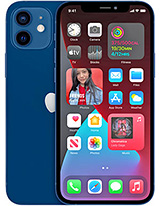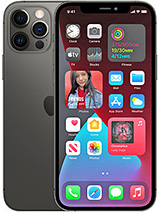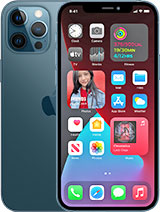Apple iPhone 12 Pro review: Enter the 5G era By Engadget
A year ago give or take, I started asking myself what made the iPhone 11 Pro a pro device, and I didn't come up with many compelling answers. If anything, it mostly seemed like a pro device in comparison to the slightly lesser hardware in the iPhone 11, but things have changed a lot in a year. The differences between the iPhone, 12 and 12 pro are vastly outnumbered by the things they have in common, and that's a good thing for you and me: it means people who don't want to spend pro. Money are still getting very. Nearly the best apple has to offer, but that also means the iPhone 12 Pro is a tougher sell than before, so who should actually buy. This thing welcome to part two of our iPhone 12 and 12 pro review.
I'm going to spend most of this video talking about what's new in this year's high-end iPhone to get the full context, including impressions about MagSafe and 5g, and the rest of the things these phones have in common. Please I recommend you watch part 1. First right off the bat I have to say apple did a fantastic job with the 12 pros design. Every version of the iPhone 12 this year has a more angular look with flat edges that evoke not just the iPad Pro, but classics like the iPhone 5. Apple's choice of materials really shines here too.
Instead of aluminum, the company once again used a shiny, stainless steel for the chassis. Our review unit is the pacific blue model, which is a lot more subtle than the brighter hue you'll find on the blue, iPhone 12 I tested, and I'm trying so hard not to make any blue steel jokes right now there it is as nice as the steel body is, though I have to say, fingerprints, stick out a lot more on this glossy steel frame than they do on the iPhone 12 aluminum body. Thankfully, I can't say the same about the 12 pros back fingerprints are super obvious on the iPhone 12 sort of standard rear glass, but the iPhone 12 Pro's back is made of a frosted glass panel that helps keep it clean and seems to help keep the phone from sliding around on arms of couches and stuff. Beyond that, the things uniting the iPhone, 12 and 12 pro outweigh the things that divide them. Both are rated ip68 for water and dust resistance, which was enough to keep both of them in pretty good working condition after a rainy bike ride, and that was a terrible idea, but it's fine.
It all worked out. Both still have a lightning port for charging and data transfer, though I can't imagine, apple sticks to lightning in its pro devices, at least for that much longer, because USB is just that useful and this year both phones use apple's, 6.1 inch, cinema Dr display, which is at once beautiful and bright, and then there's 5g, which might be the most impactful addition to the iPhone 12 series. This year I gave a little State of the Union on 5g in part.1 of the video, but let me quickly recap here: the iPhone 12 Pro gives you the ability to tap into both sub 6 and millimeter wave 5g networks, but your experience can and probably will be a lot different from mine, depending on who your carrier is and where you spend. Most of your time, I tested Verizon and T-Mobile 5g on the 12 and 12 pro around Manhattan and Brooklyn, and I got a pretty solid download speeds, just while walking around think 50 to 100 megabits on both carriers, mid-band 5g deployments, which isn't bad, but not all that much faster than LTE. In a few spots where I got lucky, those speeds got as high as 3 to 400 megabits down for both carriers.
If you live in one of the cities where either carrier has millimeter wave, though you can expect some truly crazy speeds. Like I said in the other video, I was in Bryant park downloading hours of music in seconds on Verizon's millimeter wave network, but you really need to be standing in just the right spots when I tried millimeter wave again in a park under the Brooklyn queens expressway. Just a single step in the wrong direction meant the difference between 900 megabits, down and 80. Speaking of speed. Both phones are just terribly fast thanks to apple's new a14 bionic chipset, like I said in the other video nothing you throw at.
These phones are going to give them a hard time, whether you're playing gorgeous games or exporting and editing and transcoding 4k videos. I tell you would be hard-pressed to find a phone. That's nearly this powerful. In fact, this level of performance is basically overkill for most people and the iPhone 12 Pro takes that even further. In addition to the a14's high performance, CPU, GPU and neural engine, it comes with six gigs of ram compared to just four gigs in the regular 12.
Are you ever going to notice the benefits of that extra two gigs? Probably not? Last year, it was widely reported that apple uses that extra ram in its pro level phone solely for the camera, but I can confirm that is not the case. The full six gigs is available to any app that wants it, and, while that could theoretically lead to slight performance improvements, it really just seems like a great way to future-proof. The phone as iOS and the features that come in it grow more complex and if we're talking iPhones among the most intensive features, you'll find are the ones that are used for the camera like deep fusion image processing which only used to be available on pro iPhones. But that's, thankfully, not true anymore. That said, I think this extra ram is going to come in especially helpful when you start to see new features like apple's new pro raw format kind of take the stage and, alongside the iPhone 12 Pro max, which has better cameras neither of those are available to test yet, but we'll.
Let you know when they are since we're talking about cameras anyway, we might as well dig into them for real, which only makes sense since they're what really make the iPhone 12 Pro a pro machine. Just like last year's pro, the 12 pro has three cameras: we're working with a 12 megapixel standard white camera with an f 1.6 aperture and a new seven element lenses, a 12 megapixel ultra-wide camera that captures a 120 degree field of view and a telephoto camera with a 2x optical zoom. The standard wide camera produces by far the best looking images with plenty of bright colors and rich detail. That's it. I have to say my sample images.
Don't look that much better than what I got from last year's iPhone 11 Pro. The biggest difference I noticed during daylight shoots is that the iPhone 12 pros photos are just a touch warmer than the 11 pro, but not enough that you'd notice at a glance. I also expected night shooting to be significantly different, since this sensor can technically capture more light and that's true. It can, but it only really seems beneficial when you make it a point not to shoot in night mode. When you do the differences that are apparent mostly boil down to image processing, then there's the ultra white camera, which captures the same field of view.
As last year's pro iPhone like the main camera, its photos benefit from apple's ai-powered image enhancements, but, like most ultra wide, this one tray sheer detail for space. That said, the iPhone 12 Pro is better at easing some fish eye effect out of its photos. Lastly, there's the telephoto camera, which I almost always use the least, and that's not because it's bad by any stretch, it's usually just because I'd rather move forward towards my subject and use the main camera whenever possible. When I can't, though the telephoto does in a pinch- but I do wish apple- would pull a Samsung here and give this thing a longer zoom range. Each of these cameras have their quirks, but rest assured they all take really lively, good, looking photos, even if they don't look dramatically better than last year, but are they the best photos you can get out of a smartphone? I really can't answer that, because any talk about best is completely subjective.
Every smartphone maker that cares about cameras has a certain vibe that they try to achieve. This year's pixel 5 produces images with warmer tones in daylight and lots of contrast. It's its almost like Google wants to make its photos extra moody, then there's Samsung, which just historically amps up colors to the point where your photos often look better than reality. To my eyes at least, apple's approach has always come off as the most natural and, despite how aggressive the improved smart HDR can be. Sometimes I still think that's true.
Yes, sometimes the iPhone 12 Pro's photos can look a little Samsung, but when it comes to the lighting and the overall mood of a scene, though apple still comes closest to reality, whether that's what you value is another story, oh, and I have to say, video looks excellent here too, and that's mostly because Apple was going all in on Dolby Vision, HDR across the iPhone 12 line. I was honestly taken aback by how good some 4k 60 frames per second video I shot looked, but there is one thing you really need to keep in mind. The iPhone 12 Pro is a phenomenal video camera, but these HDR videos look best on HDR screens and most of the displays I've been reviewing this footage on well they're, not, but if you have invested more heavily in the HDR display ecosystem, then congratulations you're going to get a lot more out of these videos than I can right now. Now with all that said, I have to point out that people who really care about camera performance might want to wait for the iPhone 12 Pro max instead, since it claims to have a vastly improved image stabilization system and a much better telephoto camera, there is one more thing we need to talk about, though LIDAR or light detection and ranging, like this year's iPad Pro there's a tiny emitter just under the ultra white camera that shoots out light and calculates how long it takes for that light to bounce back. That's important for a few reasons, one.
It actually helps the camera focus in low light and assists in separating your subject from the background when you're shooting night mode portraits. This is probably the most practical benefit, though I have to say night mode, portraits. Don't look all that great most of the time. More than anything, though, this LIDAR scanner could mean huge things for augmented reality. An area that we know apple is investing heavily in.
There are ways for developers to tap specifically into the LIDAR array, but many existing AR apps don't need to be modified in any way they just get to work better than they used to here's an example. Angry birds AR on a 12 pro is a lot faster than the iPhone 12 at telling the difference between flat, open space and things that might occlude it. I'm not sure how many people use apps like this regularly, but they're. Clearly, a priority for apple and LIDAR is going to help a lot, even with all the new stuff going in the iPhone 12 Pro like that new processor and 5g battery life is pretty much unchanged from last year. You can still expect between 11 and 12 hours of use on a single charge.
If you need more than that, then you might have to wait for the iPhone 12 Pro max, so at the end of it all is the iPhone 12 Pro worth the splurge over the regular iPhone 12. Well, yes, but only in certain cases if having a powerful, flexible camera is as important to you as having a sleek phone. That's easy to hold on to. You probably won't do much better than this. That said, most people, especially those who haven't upgraded in a while, will be more than fine with the regular iPhone 12.
, but that doesn't mean the iPhone 12 Pro is unimportant. It really feels, like apple uses, these kinds of devices as a test bed for features and experiences that will eventually go mainstream. Lidar is a great example. I have to expect more people will buy an iPhone 12 Pro than an 800 iPad with LIDAR, which gives developers more of a reason to explore what it could do for augmented reality. The point is, even if there might not be many specific reasons to buy an iPhone 12 Pro over an iPhone 12 you'll eventually benefit from the work that apple puts into these kinds of high-end devices anyway, and that is a lot of words about the iPhone 12 and 12 pro.
We hope you enjoyed watching our deep is dive on both of these things. I'd love to just keep testing these things and keep churning out videos, but I don't think my bosses will. Let me do that if you have feedback about the phones or the way we presented them or anything at all, really, please leave them in the comments or email me at videogadget. com, as always. Thank you so much for joining me in my basement.
To talk, phones, and I'll, see you next time.
Source : Engadget



























